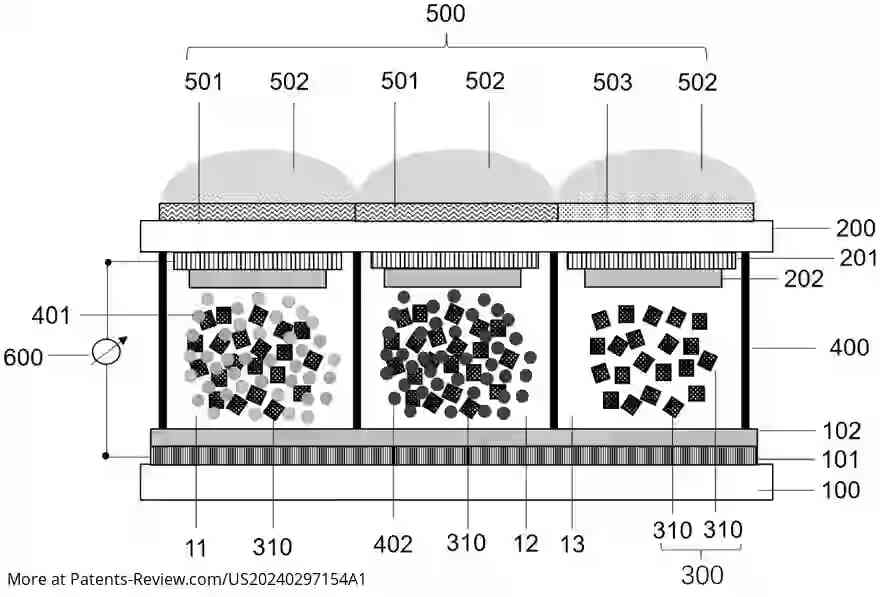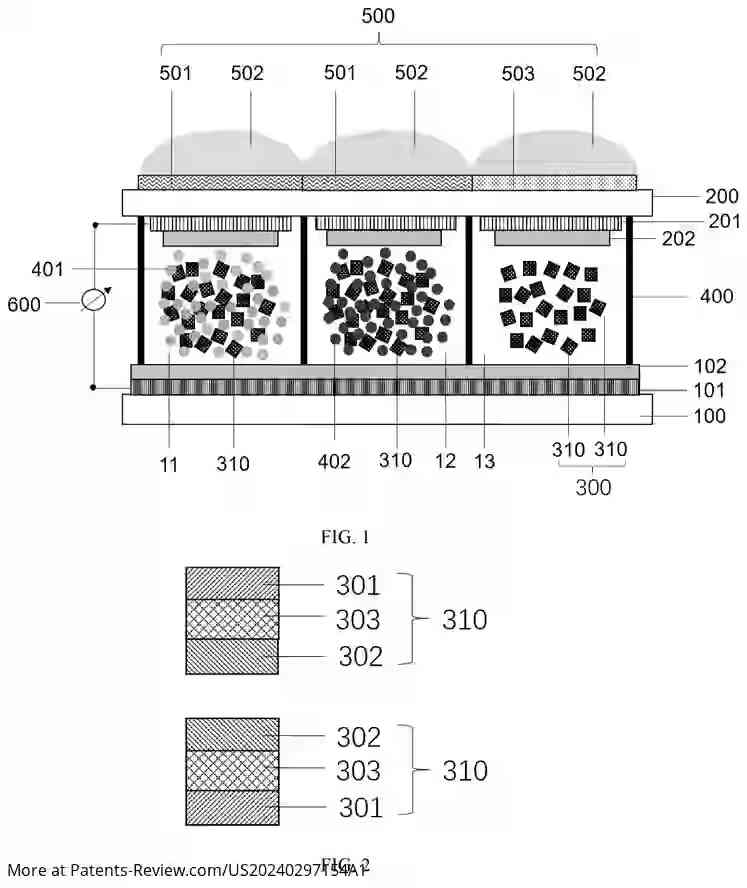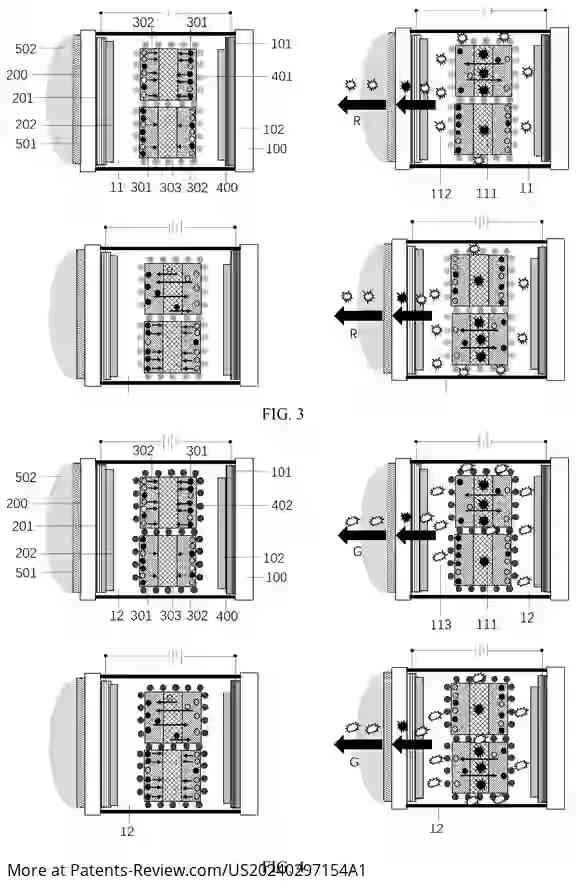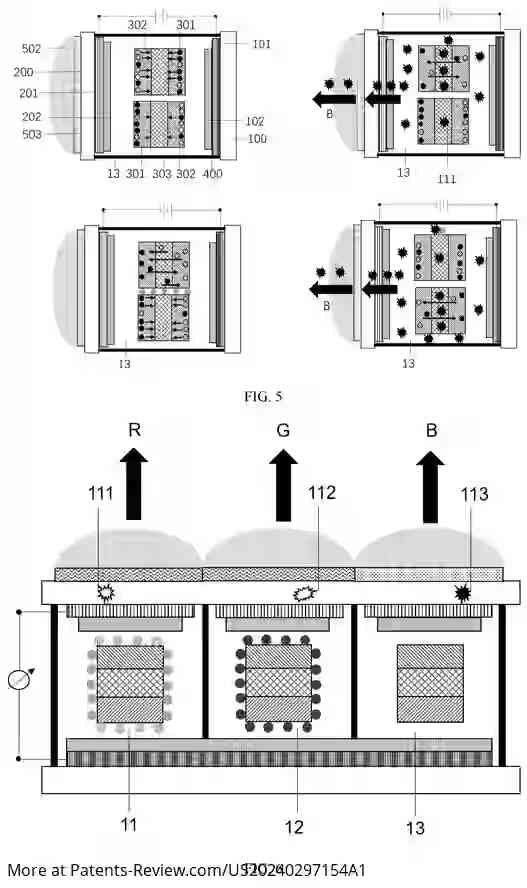FULL-COLOR uLED DISPLAY DEVICE WITHOUT ELECTRICAL CONTACT AND MASS TRANSFER
US20240297154
2024-09-05
Electricity
H01L25/0753
Inventors:
Assignees:
Applicants:
Drawings (4 of 4)




Smart overview of the Invention
A full-color μLED display device is designed to operate without direct electrical contact and mass transfer between components. It consists of a lower driving electrode on a transparent substrate, an upper driving electrode, and a barrier micro-structure that connects the upper and lower substrates. Within this structure, μLED crystal grains and wavelength down-conversion light emitting layers are arranged to display red, green, and blue colors in a controlled manner. This innovative approach simplifies manufacturing by eliminating complex processes typically required for three-primary-color μLED chips.
Technical Advancements
The device leverages the unique properties of μLED technology, which offers low power consumption, high brightness, and superior pixel resolution compared to traditional display technologies like OLED and LCD. By integrating driving, light emitting, and signal transmission functions into a compact design, the μLED display achieves high efficiency and performance. The absence of direct electrical contact between the driving electrodes and the μLED crystal grains streamlines the manufacturing process significantly.
Manufacturing Process Improvements
Conventional methods for producing full-color μLED displays involve multiple steps including precise alignment, bonding of chips, and mass transfer processes. These steps can be time-consuming and costly. The new design eliminates these complexities by using a control module that provides alternating driving signals to the electrodes, creating an electric field that manages electron-hole recombination in the μLED crystal grains. This results in a more efficient manufacturing timeline and reduced costs.
Color Display Mechanism
The color display is achieved through controllable scanning of RGB rays emitted from the wavelength down-conversion layers associated with each color unit (R, G, B). The control module plays a crucial role by regulating the electric field between the driving electrodes to excite the μLED crystal grains effectively. This allows for dynamic color mixing without needing direct electrical connections or intricate bonding processes.
Market Implications
By overcoming significant challenges in current μLED display technologies, this innovation is expected to enhance market competitiveness. The reduction in manufacturing time and costs will likely lead to wider adoption of full-color μLED displays across various applications such as flexible displays, AR/VR systems, and large-scale installations. The integration of advanced materials and structures positions this technology as a leader in the next generation of display solutions.